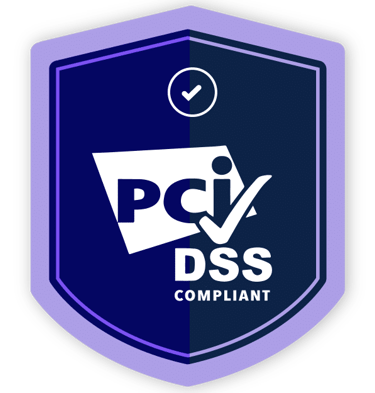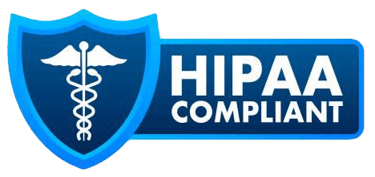Understanding the Latest CMS Hospice Conditions of Participation (CoPs)
Understand the latest CMS Hospice Conditions of Participation (CoPs), recent regulatory updates, and practical steps your hospice or home health-based hospice program must take to stay compliant, survey-ready, and financially stable under Medicare.
11/24/20258 min read
Understanding the Latest CMS Hospice Conditions of Participation (CoPs)
The regulatory environment for hospice — especially for providers delivering care in the home and across the continuum with home health and palliative programs — is more complex and more visible than ever. CMS has tightened oversight, refined survey protocols, and linked payment and public reporting more directly to quality and compliance with the Medicare Hospice Conditions of Participation (CoPs). Centers for Medicare & Medicaid Services
For owners, administrators, DONs, and clinical leaders, truly understanding the CoPs is no longer optional. It’s a core operational competency that impacts:
Your ability to stay in the Medicare program
Your survey outcomes and potential sanctions
Your reimbursement under current and future payment rules
Your public reputation in an environment of growing scrutiny
This article walks through the hospice CoP framework, highlights the most recent updates from CMS, and offers practical, implementation-focused guidance — especially for hospices operating in the home health and community-based space.
1. What Are the Hospice Conditions of Participation (CoPs)?
The Conditions of Participation are federal health and safety standards that all Medicare-certified hospices must meet to participate in the Medicare program. They are codified at 42 CFR Part 418, with Subparts C and D housing the hospice CoPs. eCFR
They apply to:
The hospice as an entity (governance, administration, quality program, etc.)
The care delivered to every individual under the hospice benefit
The environment and systems that support that care (emergency preparedness, records, drugs/biologicals, etc.)
Failure to comply can result in deficiencies, plans of correction, directed education, civil monetary penalties, or even termination from Medicare in cases of serious or uncorrected noncompliance.
Key structure of the hospice CoPs
While Part 418 includes multiple subparts, providers most often work hands-on with CoPs in areas such as: GovInfo
Patient rights and evaluation (e.g., election, revocation, and coverage)
Initial and comprehensive assessment (§418.54) eCFR
Plan of care and coordination of services
Interdisciplinary group (IDG) and core services
Hospice aide and volunteer services
Quality Assessment and Performance Improvement (QAPI)
Inpatient care, if provided directly
Emergency preparedness (§418.113) Legal Information Institute
Organizational governance, administration, and medical director
Clinical records (§418.104) National Alliance for Care at Home
Surveyors use Appendix M of the State Operations Manual as their roadmap, which contains L-tags and interpretive guidelines for each CoP. National Alliance for Care at Home
2. Recent Regulatory and Survey Environment Shifts
While the core CoPs in 42 CFR Part 418 have been relatively stable, CMS has made significant moves since 2020 in how these regulations are enforced and how quality is measured and paid.
2.1 FY 2025 Hospice Final Rule: CoP and Quality Reporting Updates
In the FY 2025 Hospice Payment Rate Update Final Rule (CMS-1810-F), CMS: Centers for Medicare & Medicaid Services
Updated the hospice wage index and payment rates (2.9% payment update for FY 2025).
Finalized changes that affect how hospices collect and report quality data under the Hospice Quality Reporting Program (HQRP).
Included specific hospice CoP-related updates and clarifications tied to quality and program integrity.
A major structural change is the transition from the Hospice Item Set (HIS) to the Hospice
Outcomes & Patient Evaluation (HOPE) tool:
CMS finalized the collection of HOPE patient-level data beginning on or after October 1, 2025, which will replace the HIS as the primary clinical data collection tool for HQRP. Homecare Homebase
Future process measures (for example: timely follow-up for pain and non-pain symptoms) will be based on HOPE data and are anticipated after FY 2028. Homecare Homebase
Operationally, this means your hospice — including any home-health-based hospice lines — must align assessment workflows, documentation, and staff competencies with HOPE, not just HIS, over the next few years.
2.2 Hospice Quality Reporting Program (HQRP) Penalties
The HQRP is no longer a “nice-to-have.” Hospices that fail to meet reporting requirements face a 4% reduction in their annual payment update (increased from 2%), creating a direct financial link between compliance and revenue. QAPIplus+1
Note: While HQRP is technically a quality program, not a CoP, your ability to meet HQRP requirements depends heavily on CoP-compliant assessment, documentation, and QAPI infrastructure.
2.3 Revised Appendix M: How Surveyors Look at CoP Compliance
CMS significantly revised Appendix M – Guidance for Surveyors: Hospice (QSO-23-08, January 2023). The updates include: Simitree Health Care+1
A more robust two-phase survey approach focused on quality of care, with enhanced pre-survey review of data and prior survey history. CHAP
Clearer interpretive guidelines for each CoP, making it more transparent what surveyors are looking for. National Alliance for Care at Home+1
Heightened emphasis on key CoPs such as patient rights, plan of care, coordination of services, and QAPI.
The result: it’s not enough to “have a policy.” Surveyors expect live, demonstrable processes, consistent documentation, and staff who can explain the “why” behind what they do.
3. Core Hospice CoPs Every Provider Should Re-Review Now
Below are selected CoPs that hospices — especially those integrated with home health operations — should prioritize as they align to the latest environment.
3.1 Comprehensive Assessment – §418.54
The comprehensive assessment must: eCFR
Be patient-specific, timely, and documented in writing.
Address the physical, psychosocial, emotional, and spiritual needs of the patient and family.
Drive the plan of care and be updated as the patient’s condition changes.
With HOPE replacing HIS, hospices will need to ensure their comprehensive assessment process captures all required HOPE elements and supports the quality measures CMS uses for public reporting and payment.
Practical tips:
Map your current assessment forms and workflows to HOPE data requirements.
Ensure RNs, social workers, chaplains, and therapies understand their role and how their assessments feed the IDG plan of care.
For agencies that also operate home health: avoid “copy-paste” from OASIS; hospice assessment must be distinct, terminal-illness focused, and CoP-driven.
3.2 Plan of Care and IDG Coordination
The plan of care (POC) must be:
Interdisciplinary – developed, reviewed, and updated by the IDG.
Patient- and family-centered, reflecting goals of care and changing needs.
Actionable – with measurable interventions, frequencies, and responsible disciplines.
The IDG meetings, documentation, and POC updates are a major survey focus under Appendix M. Surveyors frequently track: National Alliance for Care at Home+1
Whether the POC actually matches what staff are doing in the home or inpatient setting
How symptoms (pain, dyspnea, agitation, nausea, etc.) are assessed, addressed, and re-evaluated
Whether there is clear coordination with attending physicians and other providers (e.g., SNFs, hospitals, home health)
If your organization runs both home health and hospice, careful boundary setting is critical:
Hospices must ensure that all care for the terminal illness and related conditions is being coordinated by hospice, not left to “home health side” documentation.
Orders, medication changes, and POC revisions must be captured in one coherent hospice plan of care.
3.3 Hospice Aide and Volunteer CoPs
Hospice aide supervision and competency validation are common survey vulnerabilities. Under hospice CoPs, aides must have:
Documented training and competency evaluations for all tasks they perform.
Ongoing supervision by an RN, with on-site visits and documentation at required intervals.
Volunteers are required under the CoPs (e.g., 5% of total patient care hours must be furnished by volunteers), and surveyors often examine: GovInfo+1
Whether the hospice has an active volunteer program, including training and role descriptions
How volunteer activities are documented and counted toward the 5% requirement
How volunteers are integrated into the IDG when relevant
3.4 QAPI – Quality Assessment and Performance Improvement
The QAPI CoP requires a data-driven, ongoing program that focuses on high-risk, high-volume, or problem-prone areas, and measures the effectiveness of performance improvement activities.
Given the HQRP penalty structure, your QAPI now must visibly connect: QAPIplus+1
Clinical outcomes and symptom management
Patient/family experience (e.g., CAHPS Hospice Survey)
Survey deficiencies and complaint trends
Corrective actions and sustained improvement, not one-time fixes
For hospices operating within larger home health organizations, QAPI should be:
Program-specific – hospice must have its own QAPI plan, data, and projects.
Aligned but not identical – you can share infrastructure (e.g., committees, data teams), but hospice indicators must reflect Part 418 requirements and hospice-specific risk areas.
3.5 Emergency Preparedness – §418.113
Hospice CoPs require a comprehensive emergency preparedness program that includes: Legal Information Institute
Risk assessment and planning
Policies and procedures
Communication plan
Training and testing program (e.g., drills and exercises), reviewed at least every 2 years
Surveyors increasingly test whether:
Your emergency plan is specific to community-based hospice operations, including home visits, oxygen-dependent patients, and geographically dispersed caseloads.
There is evidence that staff are trained and know what to do in real events (wildfires, hurricanes, winter storms, pandemics).
Communication workflows with home health, SNFs, and hospitals are clearly defined in shared emergencies.
3.6 Clinical Records – §418.104
The clinical records CoP requires that records are:
Complete, promptly and accurately documented, and organized to facilitate care and review. National Alliance for Care at Home
Protected for confidentiality but readily retrievable for survey, care coordination, and quality review.
Inclusive of key items like the discharge summary, last physician orders, and the POC at discharge or transfer.
In the current environment, weak documentation isn’t just a clinical risk; it directly impacts:
Survey outcomes (deficiencies, condition-level findings)
HQRP compliance
Medical review and payment integrity audits
4. How the Hospice CoPs Intersect With Home Health and Community-Based Care
Many organizations now operate home health, hospice, palliative, and personal care under one corporate umbrella. That can be a strategic advantage — if you implement clear CoP-aligned structures.
Key integration risks to manage
Blurring program boundaries
Patients must be clearly enrolled in the Medicare hospice benefit or other programs; you can’t “mix” home health documentation for a hospice episode.
Different regulatory frameworks
Home health CoPs (42 CFR Part 484) and hospice CoPs (42 CFR Part 418) are not interchangeable. Assessment tools, frequencies, care coordination expectations, and survey approaches differ.
Shared staff and leadership
RNs, CNAs, and managers who work across both programs need program-specific orientation and competencies. A single policy manual is not enough; hospice must have distinct policies that satisfy its CoPs.
EMR configuration
Your EMR must clearly support hospice workflows: IDG, hospice POC, terminal prognosis documentation, CTI/narratives, HOPE data elements, and hospice-specific orders.
When done right, integration allows shared compliance infrastructure, education, and QAPI resources, but hospices still need their own CoP compliance story.
5. Practical Steps to Align With the Latest CoPs and CMS Expectations
Here are concrete actions your hospice leadership team can take over the next 6–12 months:
5.1 Perform a CoP-Gap Assessment
Use 42 CFR Part 418 and the latest Appendix M as your master checklist. eCFR+2National Alliance for Care at Home
Map each CoP to:
Policies and procedures
Actual workflow (what staff really do)
EMR forms and templates
Staff roles and competencies
Prioritize gaps that:
Are directly tied to patient safety (e.g., assessment, POC, medications)
Have high deficiency rates nationally (aides, QAPI, clinical records, emergency preparedness)
Could impact HQRP performance and payment
5.2 Prepare for HOPE and HQRP Evolution
Identify a HOPE transition team (clinical, IT, QA, education).
Review CMS HOPE specifications and crosswalk them to your current assessment tools and hospice workflows. Homecare Homebase+1
Integrate HOPE-related data collection into your QAPI plan now so your team sees it as operational, not just “extra paperwork.”
5.3 Tighten Survey Readiness as a Year-Round Process
Conduct mock surveys using the updated survey protocol and Appendix M interpretive guidelines. CHAP
Train staff to answer surveyor questions clearly and confidently, linking their practice back to:
The POC
The CoPs
The hospice’s policies
Build a survey readiness binder or dashboard with:
Key policies
Organizational chart and contracts
QAPI plan and data
Emergency preparedness documentation
Clinical record samples and tracking logs
5.4 Strengthen Documentation and Interdisciplinary Communication
Create discipline-specific documentation standards that reflect both CoPs and HOPE/HQRP expectations.
Ensure IDG minutes, POCs, and visit notes tell the same story:
What was the problem?
What did we do?
How did the patient respond?
What changed in the plan as a result?
5.5 Integrate Home Health–Hospice Governance Without Diluting CoP Compliance
If you operate both home health and hospice, ensure:
Separate, CoP-specific Governing Body minutes reflect hospice oversight.
Hospice has a clear Medical Director role with defined responsibilities under Part 418.
Joint committees (e.g., Quality, Infection Control, Ethics) have hospice-specific agenda items.
6. The Bottom Line
CMS hospice CoPs are not static checkboxes; they are a living framework that now sits at the center of:
Survey methodology (Appendix M revisions)
Quality reporting and public transparency (HQRP, HOPE)
Payment and financial viability (4% penalties, annual rule updates)
For hospices and integrated home health–hospice systems, success in 2025 and beyond means:
Translating the regulatory language of Part 418 into clean, repeatable workflows
Ensuring documentation reflects reality and supports both surveys and quality reporting
Treating CoP compliance as a strategic, cross-departmental initiative, not just a clinical or QA task
How HealthBridge Can Help
Staying aligned with the latest CMS hospice CoPs while running day-to-day operations is a heavy lift — especially if you are also managing home health, palliative care, or other service lines.
HealthBridge provides end-to-end consulting and management solutions for home health and hospice agencies, including:
CoP-based gap assessments and action plans
Development and customization of policies, procedures, and tools aligned with 42 CFR Part 418 and Appendix M
Mock surveys and survey response coaching
QAPI program design, data dashboards, and project support
Workflow and documentation optimization for HOPE, HQRP, and EMR configuration
Ongoing compliance mentorship for leadership and frontline teams
If your hospice or home health–based hospice needs structured support to navigate the evolving CMS landscape, reduce survey risk, and protect Medicare revenue, partnering with HealthBridge can give you a ready-made framework and expert guidance rather than starting from scratch.

Some or all of the services described herein may not be permissible for HealthBridge US clients and their affiliates or related entities.
The information provided is general in nature and is not intended to address the specific circumstances of any individual or entity. While we strive to offer accurate and timely information, we cannot guarantee that such information remains accurate after it is received or that it will continue to be accurate over time. Anyone seeking to act on such information should first seek professional advice tailored to their specific situation. HealthBridge US does not offer legal services.
HealthBridge US is not affiliated with any department of public health agencies in any state, nor with the Centers for Medicare & Medicaid Services (CMS). We offer healthcare consulting services exclusively and are an independent consulting firm not affiliated with any regulatory organizations, including but not limited to the Accrediting Organizations, the Centers for Medicare & Medicaid Services (CMS), and state departments. HealthBridge is an anti-fraud company in full compliance with all applicable federal and state regulations for CMS, as well as other relevant business and healthcare laws.
© 2025 HealthBridge US, a California corporation. All rights reserved.
For more information about the structure of HealthBridge, visit www.myhbconsulting.com/governance
Legal
Resources
Based in Los Angeles, California, operating in all 50 states.






